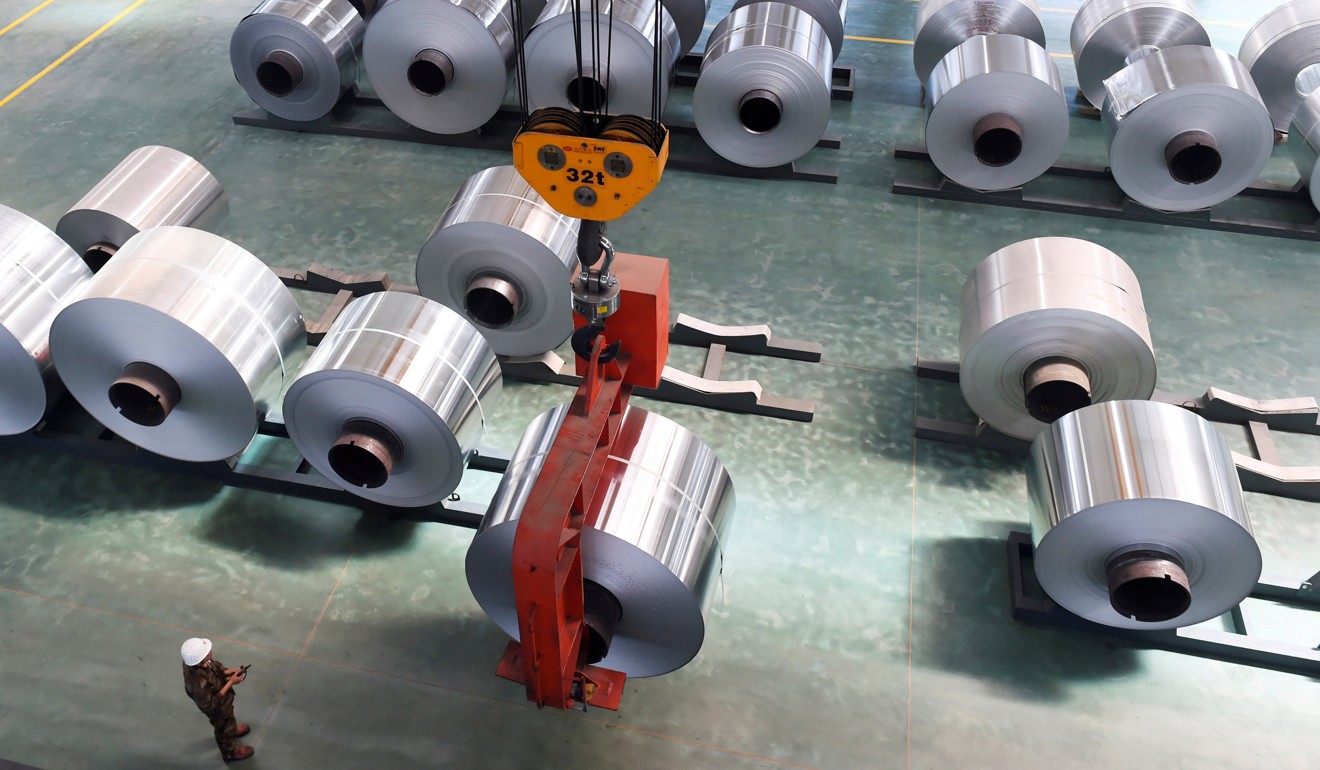
More money, less output? China unveils strong credit numbers after soft growth data
Aggregate financing hit US$225 billion last month – up 21.3 per cent from July

A day after China’s statistics agency reported slower expansion in industrial output and investments in August, its central bank published a slew of data on Friday showing the financial system has boosted credit support for economic activities.
The country’s aggregate financing, a broad measure of credit and liquidity for the economy, reached 1.48 trillion yuan (US$225.83 billion) last month – up 21.3 per cent from July, the People’s Bank of China said.
New yuan loans from banks meanwhile reached 1.09 trillion yuan in August, or nearly a third higher than July, the central bank said.
The credit data came after the National Bureau of Statistics on Thursday said China’s industrial production and fixed-assets investment had noticeably decelerated last month.

But economists said the mismatch between China’s credit and economic data was not a concern because it often takes months for credit to trickle into economic activities on the ground.
Ding Shuang, chief China economist with Standard Chartered in Hong Kong, said China’s strong performance in the first half of this year – with growth at 6.9 per cent – partly came from the credit easing in the second half of last year, while credit tightening earlier this year was behind the current economic moderation.
He said strong credit in August showed the central bank was supportive of growth, but monthly lending of more than 1 trillion yuan did not indicate a change from its neutral monetary policy stance to an eased one.
“There is no reason to change the current policy approach,” Ding said.
Deng Haiqing, an economist with brokerage JZ Securities, wrote in a note that “debt’s role in boosting growth has weakened significantly, and funds available can’t easily translate into investment or consumption”.
Chinese bankers were more confident about the country’s economic prospects than three months ago, according to a central bank survey released on Friday.
An index measuring bankers’ confidence about economic growth rose to 75.3, the highest level since the number was available from the third quarter of 2014. The index is based on a survey of more than 3,000 bank outlets across the country.
Chinese President Xi Jinping told the country’s bankers and regulators at a key meeting in mid-July to fend off financial risks.
The central bank, along with the banking regulator, is at the centre of Beijing’s campaign to defuse a debt bomb and rein in excessive credit.
The China Banking Regulatory Commission issued a statement on Friday saying the banking system had reduced speculative financing activities and risky businesses had been brought under initial control.
For instance, the outstanding assets in wealth management products – a source of funds for many shadow banking activities – grew only 6.5 per cent at the end of August from a year earlier. A year ago, the outstanding value of wealth management products was rising at a pace of over 30 per cent, the banking regulator said.
E Yongjian, a senior analyst with the Bank of Communications in Shanghai, the country’s fifth largest lender, said the authorities’ efforts to clean up shadow banking activities had forced many previously unreported credit deals to be included as loans and other formal agreements.
Meanwhile, China’s broad money supply indicator, M2, has continued to slow. M2 rose 8.9 per cent at the end of August from a year earlier – far below China’s target of 12 per cent this year. The average interest rate level of interbank lending and borrowing, or the wholesale funding cost, rose slightly by 0.14 percentage points in August.
“The broad credit growth remains on a downward trajectory. It is likely to cool further in coming quarters as monetary conditions remain relatively tight,” Julian Evans-Pritchard, a China economist with Capital Economics, wrote in a research note. “A decisive shift toward monetary policy easing seems unlikely at this stage given the rhetoric over controlling financial risks.”